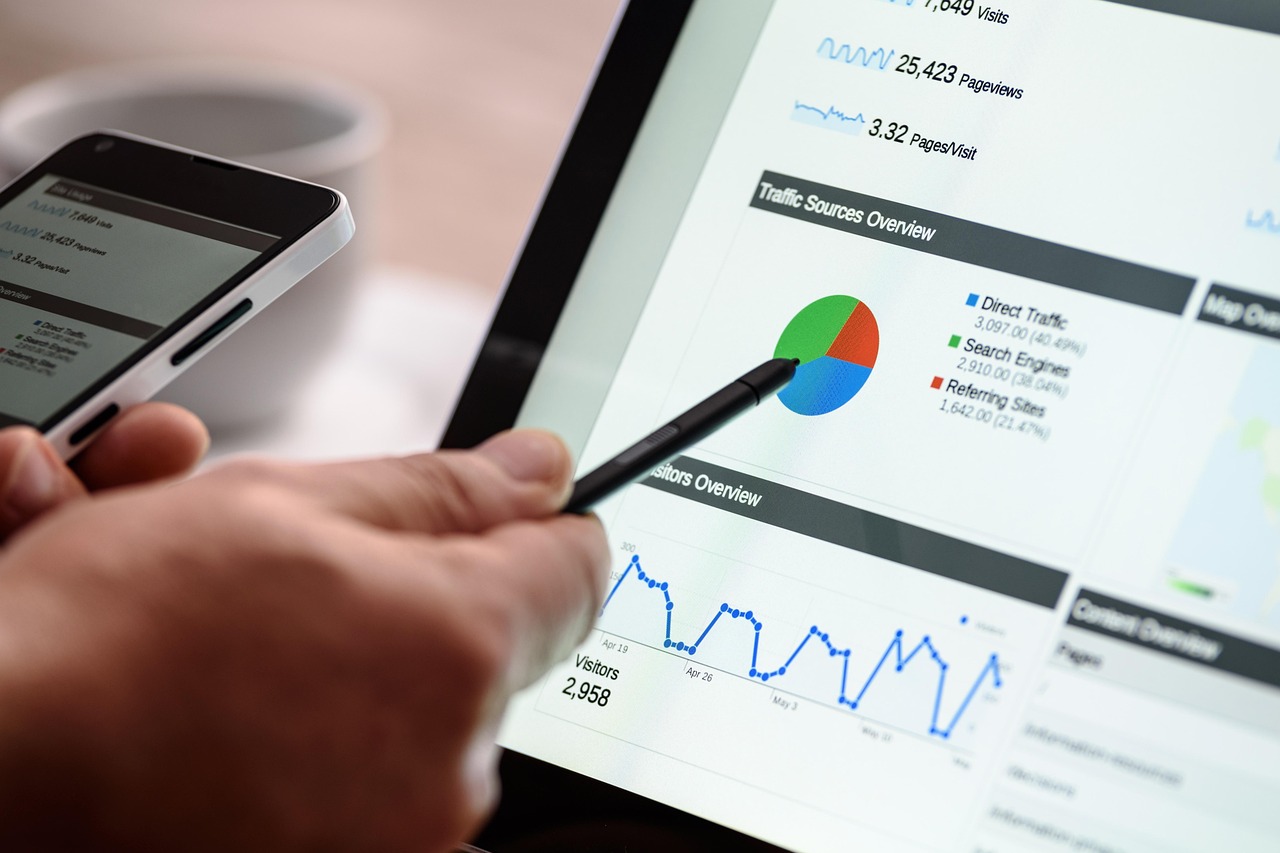

7 Advanced PMAX Optimization Tactics That Actually Boost ROAS
7 Advanced PMAX Optimization Tactics That Actually Boost ROAS
Google’s Performance Max (PMAX) campaigns have evolved quickly, offering an expanding toolkit for advertisers who want to gain more from their budgets. For every marketer aiming to get a higher return on ad spend (ROAS), it’s never been more important to understand the practical advances in PMAX. Especially now as Google continues rolling out features that bring new insights and better controls.
Let’s explore powerful, professional tactics that go beyond basic strategies and actually move the needle on ROAS. Having managed multiple PMAX campaigns across various industries, these approaches aren’t just theoretical. They’re tried, tested, and refined on the battlefield of real-world advertising.
1. Get Granular With the Latest PMAX Reporting Tools
Have you ever wondered which network channels. Search, Display, YouTube, or Discover. Are really pulling their weight in your PMAX campaigns? Google’s new channel-level reporting answers that question with precision. These reports break down which platforms are influencing different stages of your customer journey. From initial research to that all-important final conversion.
You can now leverage channel performance, search terms insights, and detailed asset performance metrics to:
– Pinpoint where conversions are actually occurring
– Identify rising search trends that align with your audience interest
– Weed out underperforming creative assets or channels, focusing your spend where it matters
I’ve found that reviewing asset reports regularly leads to smarter creative decisions. For example, discovering that video assets drive more conversions on YouTube while text assets dominate on Search has enabled quick pivots in strategy, ensuring no spend is wasted.
2. Supercharge Your Product Feeds for Shopping Results
A PMAX campaign’s product feed can make or break campaign profitability. While you might feel tempted to let automation do all the heavy lifting, hands-on feed optimization remains essential for Shopping success:
- Use Custom Labels Wisely: Segment products based on profitability, seasonality, or stock levels. This lets you bid more aggressively where the ROI justifies it.
- Feed Hygiene: Regularly audit product titles, descriptions, and images for both SEO and conversion optimization. Clean feeds mean Google reads your catalog the way you intend, reducing wasted impressions.
- Include All Available Assets: Since PMAX uses a broad range of placements, supplying rich images, data, and creative assets ensures your products look sharp no matter where they appear.
Through experience, I’ve seen a well-labeled and richly detailed feed markedly outperform generic, unoptimized catalogs. Often slashing ad waste and lifting ROAS within weeks.
3. Get Strategic With Audience Signals
Audience signals aren’t about limiting Google’s algorithms. They’re your chance to steer it in the right direction. By carefully constructing custom audience segments based on intent (think: recent site visitors, shoppers who abandoned carts, or users interested in your key competitors), you speed up the learning phase and guide automation toward high-value prospects.
A few practical ways to amp up your audience targeting in PMAX:
– Create asset groups tailored to different audience segments: Each asset group can be customized for different messaging and creative, increasing relevance. Critical for higher conversion rates.
– Test and iterate signals: Don’t just set and forget. Audience signals can be continually refined by running structured experiments and analyzing conversion data.
After repositioning audience signals in a global retail campaign, the lift in both engagement and ROAS was immediate. The right signals turned wasted impressions into conversions, with automation amplifying the impact.
4. Elevate Campaign Performance With Custom Video Assets
Scrolling past text and static images is easy for today’s users, but video assets demand attention. Google now makes it clear: campaigns without video assets miss out on performance potential across YouTube, Display, and Discovery placements. It’s no longer just a “nice-to-have.”
Here’s what separates winning campaigns from the rest:
– Invest in well-crafted, short videos that highlight key value propositions or product USPs. Keep messaging focused and adaptable across placements.
– Leverage video in asset groups for different audiences: Different videos often resonate better with distinct audience signals. Such as remarketing with testimonials or brand discovery with energetic product showcases.
I watched CTR and conversion rates climb after introducing simple, tailored video assets to previously static-only PMAX groups. Creative doesn’t need to be expensive. What matters is relevance, clarity, and fit for each audience journey.
5. Take Control: Balance Automation With Manual Oversight
Let’s be honest, giving up all campaign control to automation is risky. The latest PMAX developments allow for smart manual interventions. Without undermining the benefits of machine learning:
- Set clear Target ROAS or CPA goals: Guide the algorithm based on your wider business objectives, not just volume.
- Use negative keyword lists at the campaign level: Protect your brand’s integrity and weed out irrelevant clicks that drain budget.
- Monitor budget splits: Break out separate campaigns. Or asset groups. When a more granular approach is justified (like high vs. low-margin products).
Finding the right balance between automated bidding and manual signals can feel like tuning an instrument: when everything is in sync, results are dramatically amplified. Too much automation without guidance? You lose control. Too little, and you miss the scale.
6. Leverage Asset-Level Insights for Smarter Optimization
One of the most impactful new features in PMAX is asset-level reporting. This is where you discover not only which ad creative is winning, but why: Google’s deeper breakdowns show you exactly which headlines, images, or videos drive top performance for different segments.
What makes this so powerful? You can:
– Ditch underperforming assets before they bleed budget
– Replicate top-performing creatives across groups or campaigns
– Spot emerging trends in search queries and refine messaging accordingly
After replacing the lowest-performing asset group elements in a retail campaign, we doubled conversion rates in a matter of weeks. All without increasing spend. Fine-tuning based on granular data is as close as you get to real “control” in a PMAX world.
7. Regularly Review, Exclude & Iterate. Don’t Set and Forget
PMAX thrives on fresh input. Too often, campaigns are launched and abandoned, with the expectation that machine learning will “fix” any underperformance. The reality? Regular hands-on management is critical:
- Use newly available campaign exclusions: Exclude irrelevant products, audiences, or placements to avoid wasted budget.
- Test new creative assets with each reporting cycle: What worked last quarter may lag now. Reward current, high-performing trends.
- Schedule routine deep dives into reporting dashboards: Whether weekly or monthly, consistent reviews ensure you’re steering performance. Rather than reacting after problems arise.
In practice, the most consistent ROAS growth I’ve seen always comes back to structured, proactive, and regular optimization. Not periodic firefighting.
Frequently Asked Questions
What makes PMAX reporting different from other Google Ads formats?
Performance Max now offers detailed channel, asset, and search term insights, letting you see exactly which networks and creative elements drive conversions. This unlocks more precise optimization and allows for better budget allocation across platforms.
How important is product feed optimization for PMAX Shopping campaigns?
A well-optimized product feed is crucial. Clean, segmented, and richly detailed feeds help Google match your products with the right queries, boost ad quality, and prevent budget waste. Directly impacting campaign ROAS.
Do audience signals limit Google’s automation?
No. They help accelerate automation learning by telling the algorithm which users are likely to convert. Well-constructed signals focus the campaign on audiences that matter most, speeding up performance and reducing waste.
Why should every PMAX campaign include custom video assets?
Campaigns without video assets miss out on high-performing placements (like YouTube) and often see lower engagement. Even basic, relevant video creatives can significantly improve CTR and conversions.
How often should I review and update my PMAX campaigns?
Set a regular reporting cadence, such as weekly or biweekly, for reviewing asset performance, adjusting exclusions, and testing new creative. Consistent management ensures you maximize the impact of both automation and manual controls.
Ready to Elevate Your PMAX Campaign Strategy?
Mastering advanced PMAX optimization is about more than flipping a few switches and hoping for the best. With evolving controls, smarter reporting, and the power of refined feeds and audience signals, campaigns that get close attention are the ones that truly dominate.
If you’re serious about boosting ROAS, commit to hands-on experimentation, routine optimization, and the strategic blend of automation with human insight. The possibilities with PMAX continue to expand. Don’t let your campaign performance stand still.
Curious about applying these tactics to your own advertising? Take the next step: audit your current PMAX setup, or get in touch with someone who’s seen these strategies deliver real results. Let your data. And your creativity. Work together for real, measurable business growth.







